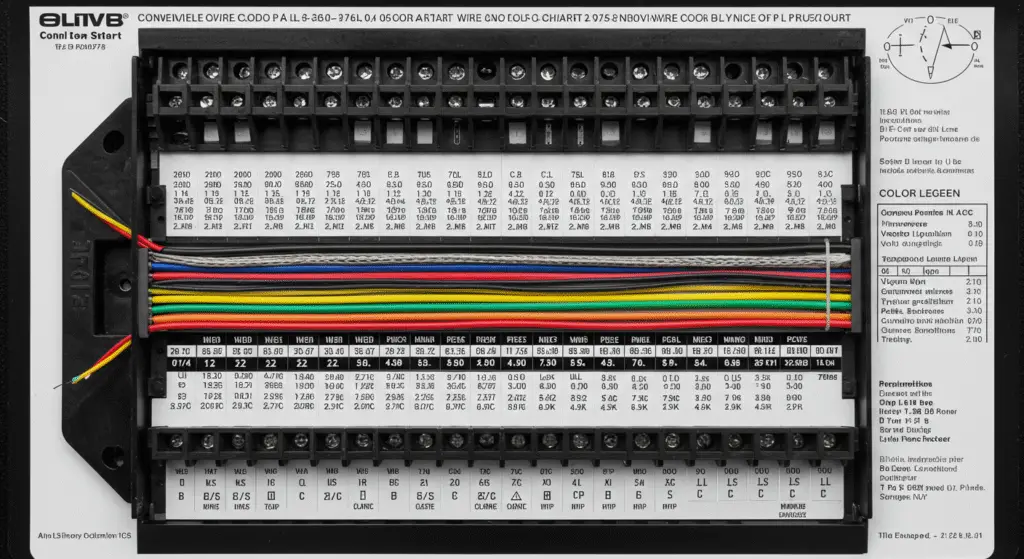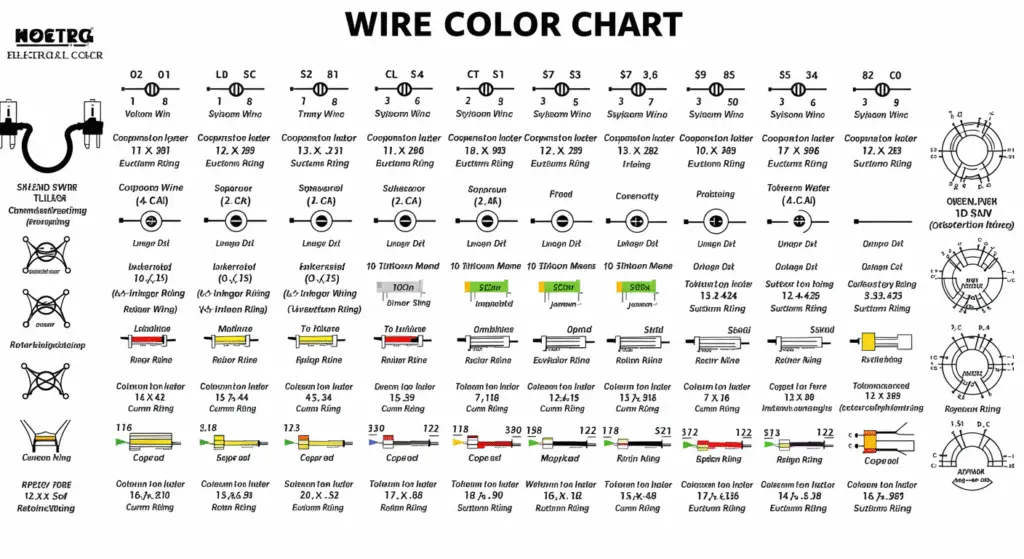
When working with electrical wires, understanding what each wire does is very important. That’s where a wire color chart becomes helpful. It gives you a clear idea of what each color represents so you can wire things correctly and safely.
Whether you’re fixing something at home, working on your car, or doing a small DIY project, using a wire color chart can make the job easier and safer.
Let’s take a closer look at how these charts work and why they matter.
What is a wire color chart?
A wire color chart is a guide that tells you what each wire color means. It helps you understand which wire is for power, which is neutral, and which is for grounding. Without a chart like this, it can be confusing, and wrong connections can lead to electrical problems or accidents.
Different places in the world use different color systems. So, depending on where you live, your chart might look slightly different. Still, the purpose stays the same — to keep things organized and safe.
Common wire colors used in homes
In the United States, wire colors in homes usually follow the rules of the National Electrical Code. Here’s what you’ll typically see:
- Black wires carry power. These are also called “hot” wires.
- Red wires can also be used for power in some setups.
- White wires are usually neutral. They return power back to the panel.
- Green or bare wires are ground wires. They’re for safety and help avoid shocks.
This system makes it easier for anyone to work on electrical projects, even years later. If wires were randomly colored, finding and fixing a problem would be much harder.
Wiring in cars is different
If you’re working on a car, the wire colors can be very different. Car makers often use their own color systems. Still, some colors are commonly used:
- Red might carry battery power
- Black often means ground
- Yellow can be for the ignition system
- Green might be for signal lights
- Blue is often for the audio system
Even though there’s no official standard for every car brand, many follow similar patterns. It’s always a good idea to check your vehicle’s manual or wiring diagram before starting work.
How different countries use different charts
Not all countries use the same wire colors. In the U.S., black is a power wire. But in Europe, brown is often used instead. White is neutral in America, but blue is neutral in many European countries.
Here’s a quick comparison:
- U.S. hot wire: black
- Europe hot wire: brown
- U.S. neutral: white
- Europe neutral: blue
- U.S. ground: green or bare
- Europe ground: green with yellow stripes
Using the wrong color chart for your area can lead to problems, especially if you’re doing international work or moving into a new country. Always double-check the system you’re using.
Low-voltage systems have their own colors
Low-voltage wiring, like what’s used in doorbells, thermostats, and some lights, has different rules. These systems don’t use much power, but you still need to know what the colors mean:
- Red might be for 24V power
- White could be for heating signals
- Green often controls the fan
- Blue might be a common wire
Even though low-voltage systems aren’t as dangerous, mixing up wires can make your system stop working. Using the right wire color chart helps everything run smoothly.

Making your own wire color chart
If you’re working on a personal or DIY project, you might use your own wire colors. Maybe you’re building something from scratch, or repairing old wires with faded colors.
In cases like these, it’s a smart idea to make your own chart. Here are some tips:
- Use different colors for each type of wire
- Write everything down
- Label each wire with tape or markers
- Keep a copy of the chart in a safe place
This makes it easier if you need to fix something later or if someone else needs to work on it.
Some final safety tips
Even with a chart, it’s important to test every wire before working with it. Colors can fade over time. Or someone before you might have used the wrong color by mistake.
Always use a tester to check wires before you touch them. Here are some other helpful tips:
- Label wires as you go
- Never guess what a wire does
- Don’t assume all systems follow the rules
- Ask a licensed electrician if you’re unsure
Working with electricity can be dangerous. That’s why a wire color chart is more than just a list — it’s a tool that helps keep you safe.
Why this chart is a must-have
Using a wire color chart helps make electrical work easier and more organized. Whether you’re changing a light fixture or fixing a car stereo, knowing what each wire does saves time and avoids mistakes.
It also helps you meet safety codes and do clean, professional-looking work. With a chart on hand, you can feel more confident — even if you’re new to wiring.
And if you’re teaching someone else or working in a team, a clear system makes things simple for everyone involved.
FAQs
Can I always trust the wire colors I see?
Not always. Some wires might be old, faded, or reused. Always test wires before you assume anything.
Can I change wire colors if needed?
Yes. Use colored tape or sleeves to label wires correctly. Just make sure to document what you’ve done.
Is using a wire color chart required?
In most cases, yes — especially for buildings. It helps with inspections and keeps your setup legal and safe.
What should I do if I don’t know what a wire does?
Stop and test it. Don’t take chances. Use a multimeter or contact an electrician for help.
In summary
A wire color chart is a helpful guide for anyone working with wires. It makes things safer, easier, and faster. It doesn’t matter if you’re doing home repairs, working on a car, or building something new — knowing your wire colors is a smart move.
So next time you’re dealing with wires, keep your chart close by. It could save you time, money, and maybe even your life.

Pingback: Easy Guide to Splicing Car Wires for Beginners